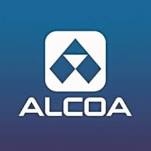 When it rains, it pours; companies are pouring in to welcome 3D printing techniques to their manufacturing processes. The latest to do so is Alcoa, which announced its new intentions on Tuesday, November 4, at its annual investor day presentation hosted at the New York Stock Exchange.
When it rains, it pours; companies are pouring in to welcome 3D printing techniques to their manufacturing processes. The latest to do so is Alcoa, which announced its new intentions on Tuesday, November 4, at its annual investor day presentation hosted at the New York Stock Exchange.
Alcoa Inc. is best known as a global leader in light metals manufacturing, particularly aluminum, for a number of industries. The company’s major markets are automotive, packaging, consumer electronics, aerospace, commercial transportation, building and construction, oil and gas, and defense. These major industries are all technologically intensive and rely on advances in processes and materials to continue moving forward. The introduction of 3D printing technology to any of these can have far-reaching implications.
“You are going to see it have a big impact in industry,” said Ray Kilmer, Alcoa’s Chief Technology Officer, at the investor presentation.
The company plans — among many other uses — to use additive manufacturing to produce parts for jet engines. Obviously these are some critical components, and technique must be up to snuff, indicating a strong trust in 3D printing. The method offers undeniable benefits to Alcoa; production time can be cut in half, and costs reduced by a quarter for a jet engine fan blade, for example.
While current production time for such a fan blade, from design to completed product, is approximately one full year, using 3D printing techniques, the time could be slashed to just 25 weeks. The capability to create 3D models for the casting process significantly reduces the time compared to traditional die-making techniques. “More research is needed,” said Kilmer, “but we will be able to print some of these parts directly (instead of casting).”
In addition to reducing the time by more than half, costs for product development might be 25% lower than traditional processes. The 3D modeling process allows for relatively fast turnaround of new design iterations for complex components, and 3D printing offers the ability to create these products quite quickly, all reducing the lengthy process and high costs of traditional forging technology.
Alcoa has a significant focus on technology, which it views (according to Klaus Kleinfeld, CEO) as being “a gigantic advantage that powers every one of our businesses.” Teams at the Alcoa Technical Center in Upper Burrell, Pennsylvania and other locations are working now on 3D printing production.
An important part of Kleinfeld’s plan for Alcoa, centers on increasing profitability in the company, which includes the need to cut production costs. Kilmer noted that Alcoa’s strategy involves “the relentless pursuit of taking costs out” of the manufacturing process. The strategy has been, it seems, going very well in 2014. With a target goal for the year having been set at $850 million in gains from productivity improvements already blown out of the water — with $862 million through the third quarter, and $1.1 billion anticipated for the entirety of the year — development work seems well on track.
Alcoa is certainly committed to their new strategy of incorporating additive manufacturing. Kilmer noted that they have “a large focus group looking at 3D printing” and next on the board might be acquisitions to further their plans.
Do you think Alcoa is on the right track? 3D printing may have a major impact on the company’s operations. Discuss your thoughts in the Alcoa 3D Printing forum at 3DPB.com.
Subscribe to Our Email Newsletter
Stay up-to-date on all the latest news from the 3D printing industry and receive information and offers from third party vendors.
You May Also Like
Gorilla Sports GE’s First 3D Printed Titanium Cast
How do you help a gorilla with a broken arm? Sounds like the start of a bad joke a zookeeper might tell, but it’s an actual dilemma recently faced by...
Nylon 3D Printed Parts Made More Functional with Coatings & Colors
Parts 3D printed from polyamide (PA, Nylon) 12 using powder bed fusion (PBF) are a mainstay in the additive manufacturing (AM) industry. While post-finishing processes have improved the porosity of...
$25M to Back Sintavia’s Largest Expansion of Metal 3D Printing Capacity Since 2019
Sintavia, the digital manufacturing company specializing in mission-critical parts for strategic sectors, announced a $25 million investment to increase its production capacity, the largest expansion to its operations since 2019....
Velo3D Initiates Public Offering in a Bid to Strengthen Financial Foundations and Drive Future Growth
Velo3D (NYSE: VLD) has been among a number of publicly traded 3D printing firms that have attempted to weather the current macroeconomic climate. After posting a challenging financial report for 2023,...


































